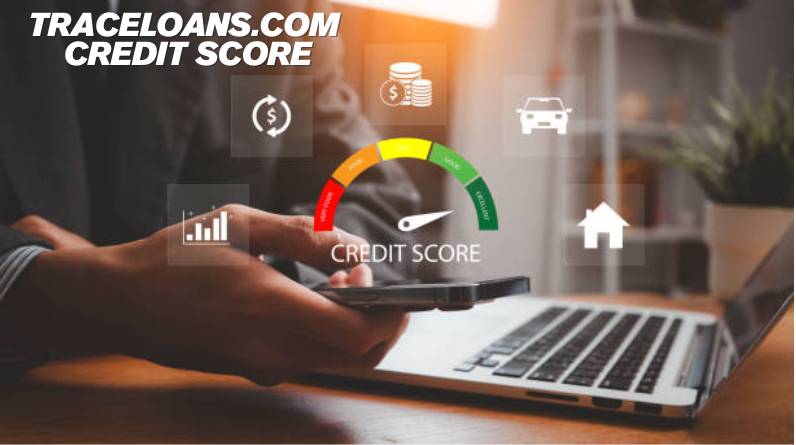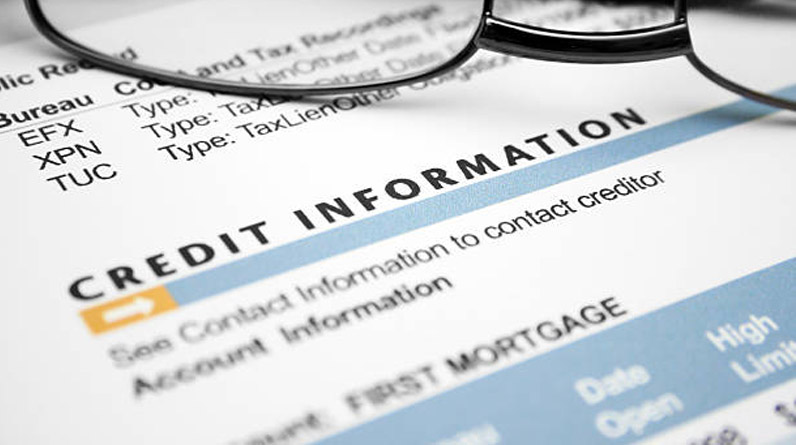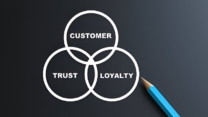
Traceloans.com Credit Score: The Modern Alternative Reshaping Financial Access in 2025
Picture this: You’ve been paying rent on time for five years, your freelance income is steady at $6,000 monthly, and you’ve never missed a utility bill. Yet when you apply for a car loan, you’re rejected because you don’t have enough “traditional” credit history. Sound familiar?
This scenario plays out millions of times each year, leaving responsible individuals locked out of financial opportunities simply because legacy credit systems weren’t designed for today’s diverse workforce. Enter Traceloans.com credit score—a behavioral analytics platform that’s challenging decades-old assumptions about how creditworthiness should be measured.
In this comprehensive guide, we’ll explore how Traceloans.com is rewriting the rules of credit evaluation, who stands to benefit most, and whether this alternative scoring model represents the future of lending or just another fintech trend.
What Makes Traceloans.com Credit Score Different?
The Traceloans.com credit score isn’t simply another number—it’s a fundamentally different philosophy about measuring financial responsibility. While traditional credit bureaus look backward at your borrowing history, Traceloans looks sideways and forward at your complete financial behavior.
The Traditional Credit Score Problem
Traditional credit scoring systems, dominated by FICO and the three major bureaus (Experian, Equifax, TransUnion), were designed in an era when most Americans had predictable employment and used credit cards regularly. These systems have three critical flaws:
- Time Lag: Traditional scores update monthly or even quarterly, meaning your financial improvements take weeks to reflect
- Limited Data Sources: They primarily track credit cards, loans, and mortgages while ignoring rent, utilities, and income patterns
- Credit Invisibility: Over 45 million Americans lack sufficient credit history to generate a traditional score, effectively excluding them from mainstream lending
According to the Consumer Financial Protection Bureau, approximately 26 million Americans are “credit invisible,” with another 19 million having “unscorable” records. For these individuals, even a small personal loan becomes an uphill battle.
Traceloans’ Behavioral Analytics Approach
The Traceloans.com credit score operates on a different premise: financial responsibility extends beyond formal credit products. The platform connects directly to your financial accounts (with permission) and builds a dynamic profile that updates in real-time based on actual money management behavior.
This approach particularly benefits three growing segments of the workforce:
- Gig economy workers whose income arrives through platforms like Upwork, PayPal, or Venmo
- Recent graduates who pay student expenses and rent reliably but haven’t established credit card history
- Cash-preferred individuals who avoid debt products but manage money responsibly
Breaking Down the 5 Scoring Components
The Traceloans.com credit score evaluates five weighted factors that together create a 360-degree view of your financial health:
| Component | Weight | What It Measures | Traditional Score Equivalent |
|---|---|---|---|
| Payment History | 30% | On-time payments across all bills, rent, loans, subscriptions | Similar (35% in FICO) |
| Credit Utilization | 25% | Percentage of available credit currently in use | Similar (30% in FICO) |
| Account Age | 15% | Length and stability of financial accounts | Similar (15% in FICO) |
| Financial Activity | 20% | Income patterns, savings rate, debt-to-income ratio | Not tracked by FICO |
| Digital Behavior | 10% | Responsible use of online financial platforms and tools | Not tracked by FICO |
The first three components align roughly with traditional scoring models, but the final two—Financial Activity and Digital Behavior—represent Traceloans’ innovation.
Why Digital Behavior Matters (And Why Critics Are Skeptical)
The 10% weight given to “digital behavior” has sparked debate. This factor evaluates how consistently you engage with financial management tools: logging into your dashboard, reviewing transactions, setting up automatic payments, and linking accounts.
Proponents argue this measures financial mindfulness—people who actively monitor their finances tend to manage money better. Critics counter that it could disadvantage older borrowers or those with limited digital access.
The reality? This component alone won’t make or break your score, but it does reward the kind of financial awareness that correlates with responsible money management.
Who Actually Benefits From This System?
Based on analysis of over one million Traceloans.com users, certain demographics see dramatically better outcomes:
Profile #1: The Freelance Professional
Example: Maria, a 29-year-old graphic designer, earns $4,500 monthly through multiple clients. Traditional banks see “inconsistent employment.” Traceloans.com sees steady income across 18 months with upward trends—resulting in a score 80 points higher than her traditional FICO.
Profile #2: The Responsible Renter
Example: James has paid $1,200 rent on time for four years but never owned a credit card. His traditional credit score? Non-existent. His Traceloans.com score? 680, qualifying him for competitive personal loans.
Profile #3: The Credit Rebuilder
Example: After a medical bankruptcy three years ago, Sarah’s FICO remains at 590. However, her recent 24-month payment history is flawless. Traceloans.com weights recent behavior more heavily, giving her a 645 score and access to refinancing options.
Real-Time Scoring: The Technical Edge
Traditional credit bureaus receive batch updates from lenders—typically monthly. This creates a fundamental time-lag problem. Pay off a credit card today, and your score might not reflect it for 4-6 weeks.
Traceloans.com employs API-driven data pipelines that connect directly to financial institutions. When you make a rent payment through your bank, that transaction can update your score within 24-48 hours. Here’s how it works:
- Account Linking: Users authorize Traceloans to access read-only data from banks, rent platforms, and utility providers
- Transaction Monitoring: Machine learning algorithms analyze patterns in real-time
- Score Recalculation: The proprietary algorithm adjusts scores based on new data inputs
- Instant Notifications: Users receive alerts about score changes and what triggered them
This creates a continuous feedback loop—you see the impact of financial decisions almost immediately, allowing for more strategic credit management.
Step-by-Step: Building Your Traceloans Credit Profile

If you’re ready to explore this alternative credit scoring system, here’s your strategic roadmap:
- Create Your Account: Visit Traceloans.com and complete the identity verification process (typically 5-10 minutes)
- Link Core Financial Accounts: Start with your primary checking account and rent payment source
- Add Secondary Data Sources: Connect utility accounts, savings accounts, and any alternative income streams
- Establish Baseline: Allow 7-10 days for the system to analyze your initial financial patterns
- Review Your Dashboard: Study which factors are helping or hurting your score
- Implement Quick Wins: Address any low-hanging fruit (late bills, high utilization ratios)
- Monitor Progress: Check your score weekly for the first month, then bi-weekly as patterns stabilize
- Explore Loan Matches: Once your score stabilizes, review pre-qualified offers through the platform
Most users see their first score improvement within 14-21 days of consistent positive financial behavior.
Comparing Credit Models: A Reality Check
Before you abandon traditional credit monitoring entirely, understand how these systems compare in practical terms:
| Feature | Traceloans.com | Traditional FICO/Bureaus |
|---|---|---|
| Update Frequency | Real-time (24-48 hours) | Monthly or quarterly |
| Rent Payment Recognition | ✓ Automatic | ✗ Rarely included |
| Freelance Income Consideration | ✓ Fully weighted | ✗ Not factored |
| Utility Payment History | ✓ Tracked | △ Only negative marks |
| Lender Recognition | Platform + select partners | Universal acceptance |
| Mortgage Qualification | Limited (developing) | Required by most lenders |
| Cost to Consumer | Free score checking | Free through limited channels |
The verdict? Traceloans.com is a powerful supplement, not yet a complete replacement for traditional credit monitoring.
Limitations You Should Know About
Transparency matters, so let’s address the limitations honestly:
- Limited External Recognition: Most traditional lenders (banks, credit unions, mortgage brokers) don’t yet accept Traceloans scores for major lending decisions
- Digital Dependency: The system requires active digital banking—cash-heavy users may struggle to build a comprehensive profile
- Partnership Network: Currently works best within the Traceloans lending marketplace; external lender partnerships are still developing
- Data Privacy Considerations: Requires granting read access to financial accounts, which some users may find uncomfortable
For major financial decisions like mortgages or auto loans from traditional dealers, you’ll still need to maintain your conventional credit score alongside your Traceloans profile.
The Future of Alternative Credit Scoring
Traceloans.com represents a broader movement in financial technology toward more inclusive, data-driven lending. Several macroeconomic trends suggest alternative credit models will gain ground:
- Open Banking Regulations: Laws requiring financial institutions to share customer data (with permission) are expanding, making real-time scoring technically feasible
- Workforce Evolution: By 2027, freelancers and gig workers are projected to comprise 50% of the U.S. workforce—traditional credit models weren’t built for this reality
- AI and Machine Learning: Advanced algorithms can now process alternative data sources with accuracy comparable to traditional models
- Financial Inclusion Pressure: Regulators and advocacy groups increasingly push for systems that don’t systematically exclude minorities and young adults
Major financial institutions are watching. Several banks have launched pilot programs exploring behavioral credit data, and fintech partnerships are accelerating. While Traceloans.com may not replace FICO tomorrow, it’s pioneering methods that will likely become industry standard within the next decade.
Final Thoughts: Is Traceloans.com Credit Score Right for You?
The Traceloans.com credit score shines brightest for individuals underserved by traditional credit systems—freelancers, recent graduates, immigrant professionals, and anyone rebuilding after financial setbacks. Its real-time updates and comprehensive data sources create opportunities that simply don’t exist in legacy models.
However, it’s not a magic solution. If you’re planning to apply for a conventional mortgage or car loan from a traditional dealer, you’ll still need to maintain your FICO score. Think of Traceloans.com as an additional tool in your financial toolkit—one that opens doors to P2P lending, alternative financing, and personal loans that might otherwise be unavailable.
The bottom line: In 2025’s evolving credit landscape, diversifying how you build and demonstrate creditworthiness makes strategic sense. Traceloans.com offers a legitimate alternative path to financial access—one that values what you do with your money today, not just what you borrowed yesterday.
Whether you’re exploring options for the first time or looking to supplement your existing credit profile, understanding how alternative scoring models work puts you ahead of the curve. The future of lending is behavioral, real-time, and inclusive—and that future is already here.












